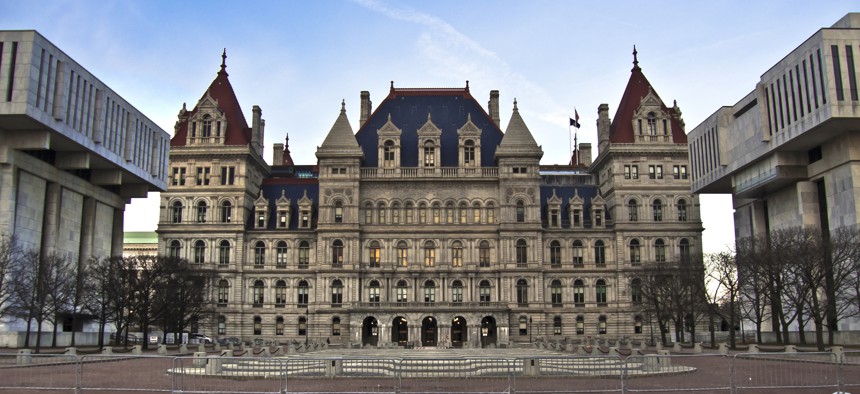Because redistricting involves the distribution of political power, it will always be political even if it is not partisan. Like anything political, it causes debate – but most of the discourse around redistricting centers around partisanship. Voting rights advocates, good government groups, and the news media spend so much energy on evaluating the process from a partisan perspective, rather than the central issue: Most Americans don’t know much about redistricting, or how they can get involved. Irrespective of whether redistricting leans more or less towards partisanship, it must stop being an esoteric and cryptic process. It must effectively be a process that involves the public from its outset. Otherwise, we will continue to endure the consequences of this insular and confusing process, which among others, continues to marginalize groups such as Hispanics, when one examines census data.
An example of this marginalizing outcome is evident in the proportion of state legislators that is Hispanic. The citizen, voting-age Hispanic population in New York state was 13.6% in 2019. Yet, after the 2020 elections, less than 8% of state senators are Hispanic and about 9% of members of the state Assembly are Hispanic. In the U.S. House of Representatives, Hispanics have been able to send four Hispanic representatives to Washington. Yet one of the draft plans presented for public comment by the New York State Independent Redistricting Commission intended to eliminate one of those districts represented by a Hispanic member of Congress, when Hispanics contributed 531,000 persons to New York State’s population growth between 2010 and 2020, more than any other group.
At first glance, a mapmaker or anyone competent enough in running a computerized mapmaking program could draw legislative districts, using the necessary criteria: Districts must be of equal population size; they must be compact and contiguous, and preserve political subdivisions. But districts must also conform to additional criteria, as stipulated by the state Constitution, such as preserving “communities of interests” as well as preserving “cores of prior districts.” Because it involves judgment based on these additional, less objective (or even downright subjective) criteria, redistricting has the potential to shape elections and political representation – and as such, the public must be actively and affirmatively included.
Calls and initiatives for greater openness and public involvement in redrawing legislative districts have tried to wrest control over redistricting from legislatures in many states around the country and pass it on to commissions or boards, whether in an advisory capacity or in binding form. Commissions such as New York’s Independent Redistricting Commission (IRC) have seemingly been more responsive than state legislatures in terms of greater public involvement. However, those efforts have still fallen short of meaningful public participation. As a result, legislative redistricting will remain obscure, remote and esoteric to most people, and the possibility to influence the process and its outcomes (legislative districts that reflect the broad wishes of state residents) will still be limited. For effective public inclusion, redistricting must begin with a widespread public education campaign.
Since the New York State legislature rejected the maps proposed by the Independent Redistricting Commission, and the State Court of Appeals has also declared unconstitutionally partisan the maps drawn by the Legislature, the public’s participation will be even more limited. When the Legislature drew congressional, state Senate and Assembly district lines, input would only have been available to those with informal access to the legislators with direct involvement in the process, and perhaps the professional staff of the New York State Legislative Task Force on Demographic Research and Reapportionment (LATFOR).
Meaningful public participation must entail more than an opportunity to opine at a public hearing or even to submit a map plan, although these are minimum standards for public participation. In order to have meaningful public participation, the public must understand what the redistricting process actually entails, what the criteria redistricting bodies use to draw legislative districts are, and how those criteria become implemented in draft plans. In short, meaningful public participation in redistricting involves a public education campaign, along with a public participation promotion campaign.
An indispensable ingredient for drawing legislative districts is accurate population counts, and in 2020, cities and counties throughout New York State invested millions of dollars to make sure New Yorkers filled out the census questionnaire. A similar effort may be undertaken for the redistricting process. After all, the Constitution says that one of the primary purposes of the decennial census is the collection of population data to be used in drawing congressional districts. Because redistricting is the responsibility of state governments, it is at this level that such an educational and promotional effort must come from.
While it may be too late for this decennial round of legislative redistricting, both the IRC and LATFOR or any entity charged with redistricting can move forward with publishing publicly how the maps they propose conform specifically to the criteria these bodies are mandated to adhere to, at the individual legislative district-level. They must explain their work and they must justify it.
Carlos Vargas-Ramos is Director for Public Policy, External and Media Relations, and Development at the Center for Puerto Rican Studies at Hunter College and a political scientist.
NEXT STORY: Editor’s Note: Leave Delgado’s ethnicity alone


